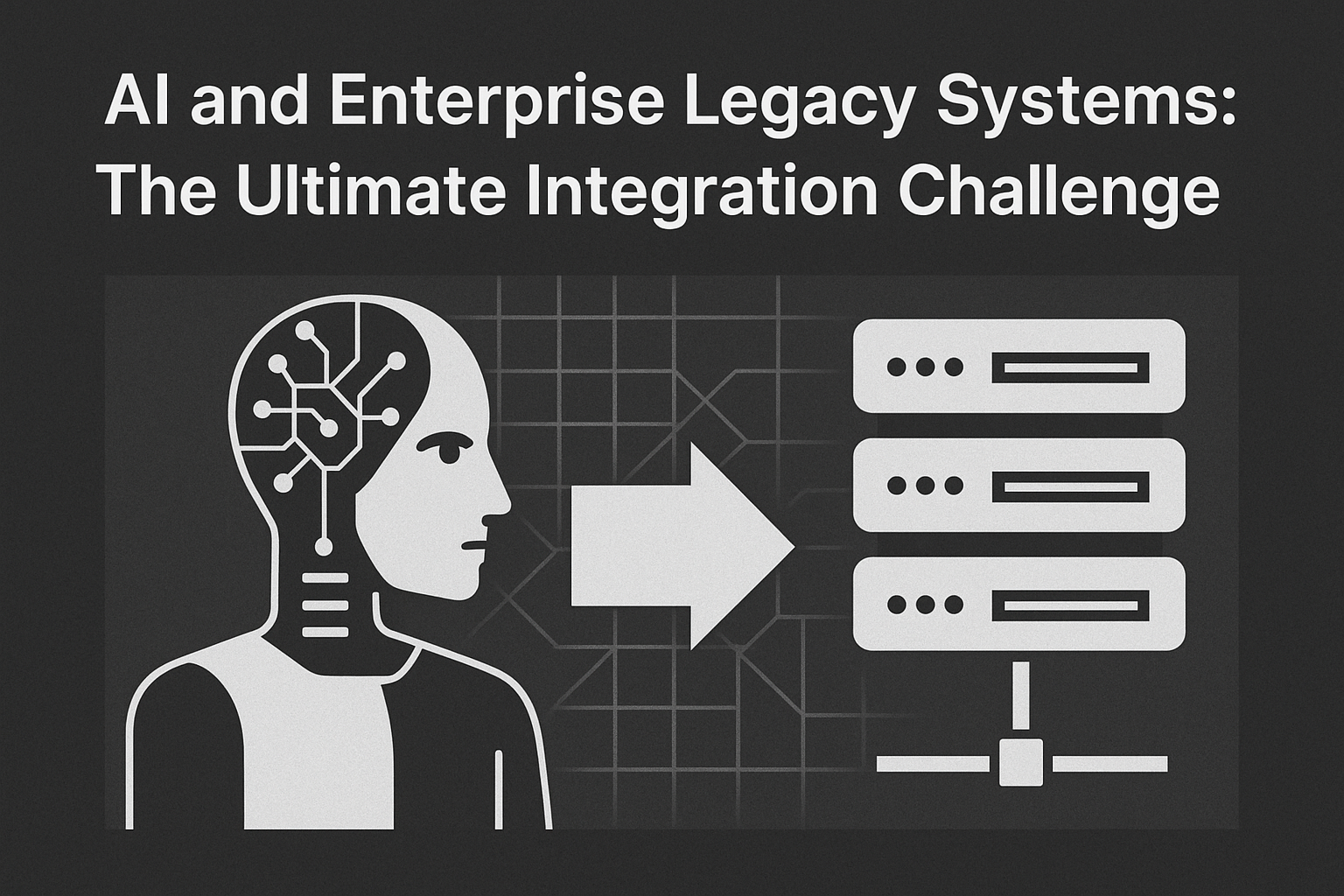AI and Enterprise Legacy Systems

For decades, enterprise companies have relied on legacy systems to run critical operations. These systems are robust, proven, and often highly customized — but they’re also outdated, rigid, and challenging to integrate with modern AI solutions.
So, how do enterprises bring AI into the mix without disrupting their core systems?
The Compatibility Gap
Legacy systems were never designed to handle AI-driven workflows, data analytics, or real-time processing. This creates a significant compatibility gap between what the enterprise needs today and what their existing infrastructure can deliver.
For example, a banking institution may still use COBOL-based systems for transaction processing. Integrating AI for fraud detection requires bridging the gap between real-time data processing and static, batch-oriented legacy systems.
Challenges in Integrating AI with Legacy Systems
Data Incompatibility: Legacy systems often use outdated data formats, making it difficult to integrate with modern AI platforms that rely on structured, real-time data.
Scalability Issues: Many legacy systems struggle to handle the sheer volume of data that AI systems require for accurate predictions and analysis.
Security Risks: Integrating AI systems can expose vulnerabilities in legacy infrastructure, making it a target for cyberattacks.
Technical Debt: Years of custom patches and workarounds in legacy systems can complicate AI integration, leading to unforeseen technical hurdles.
Cost Constraints: Implementing AI without disrupting core systems can be costly, particularly when dealing with proprietary software or vendor lock-ins.
Strategies for Integrating AI with Legacy Systems
Model Context Protocol (MCP): Developed by Anthropic, MCPs enable AI systems to interface with legacy infrastructure by structuring data flows and creating contextual models that bridge older systems with AI-driven applications. This allows for controlled integration without disrupting existing operations.
API Integration: Use APIs to connect legacy systems to modern AI platforms, enabling data flow without overhauling existing infrastructure.
Data Wrangling and ETL Pipelines: Create data pipelines that extract, transform, and load data from legacy systems into AI-compatible databases.
Edge Computing: Deploy AI at the edge to minimize latency and reduce the dependency on legacy infrastructure.
Middleware Solutions: Implement middleware that acts as a bridge between legacy systems and AI modules, allowing both to function seamlessly.
Gradual Modernization: Instead of a complete overhaul, enterprises can take a phased approach, starting with AI pilots in low-risk areas (e.g., data processing or reporting).
Real-World Examples of AI and Legacy System Integration
Healthcare: Hospitals leveraging AI for patient data analysis while maintaining legacy EMR systems.
Finance: Banks integrating AI fraud detection with COBOL-based transaction systems.
Manufacturing: Factories using AI to monitor equipment health while running legacy SCADA systems.
Retail: Retailers using AI for personalized marketing and predictive inventory management while relying on legacy POS systems.
Logistics: Shipping companies integrating AI route optimization with traditional fleet management software to reduce fuel costs and delivery times.
Energy: Power companies using AI to predict equipment failures while maintaining older SCADA and grid management systems.
The Bottom Line
Integrating AI into legacy systems may seem daunting, but with the right strategy, it’s possible to leverage the power of AI without sacrificing the stability of existing infrastructure. The key is to treat AI as a complement — not a replacement — to legacy systems.
Enterprises that successfully bridge the gap between AI and legacy systems stand to gain a competitive edge by unlocking new efficiencies, insights, and automation capabilities while maintaining operational continuity.